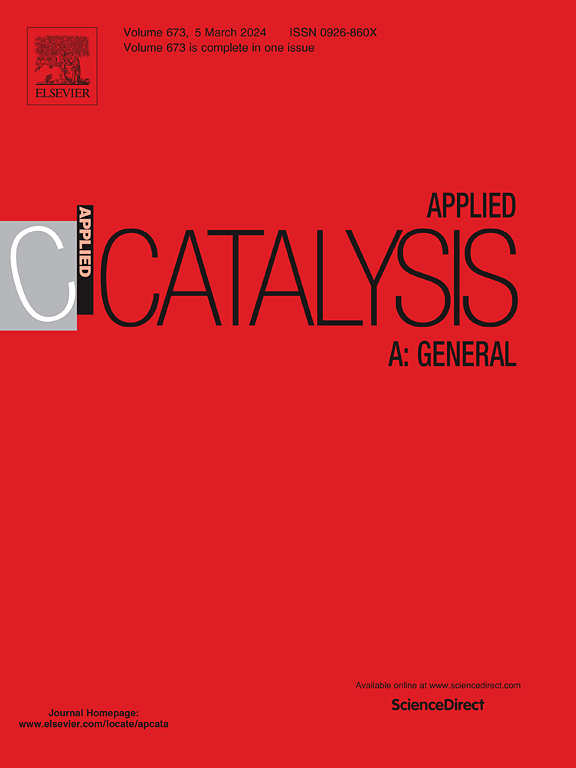Constructing Magnetic Single-Atom Catalysts with High Activity and Stability via an in situ Nitrogen Doping Modulation Strategy for the Hydroformylation of 1-Dodecene
IF 4.7
2区 化学
Q2 CHEMISTRY, PHYSICAL
引用次数: 0
Abstract
Regulating the hydroformylation capacity of heterogeneous catalysts is essential for efficiently converting higher olefins into aldehydes. In this study, a magnetic single-atom rhodium-cobalt-based catalyst (RhCo SACs) was synthesised by modifying Fe3O4 with polymerised carbon nitride. Maintaining a constant metal single-atom loading, the catalytic activity in 1-dodecene hydroformylation was modulated by adjusting the type of N species in the support. The distribution of single atoms and valence states was characterised. At the same time, density functional theory (DFT) calculations were conducted to evaluate substrate binding energies and reaction-free energy barriers, providing insights into reaction mechanisms and pathways. The RhCo-pyridinic N configuration lowered the Gibbs free energy of the rate-determining and hydrogenation steps, enhancing substrate reaction activity. Compared to RhCo-graphitic N, RhCo-pyridinic N demonstrated superior performance, achieving a 1-dodecene conversion rate of 98.3% and aldehyde selectivity of 98.6%. Furthermore, the catalyst was magnetically recovered without loss of activity or mass and maintained stable performance over 10 reuse cycles. These findings present a novel and efficient strategy for the precise design of magnetic single-atom catalysts with potential practical applications in the hydroformylation of high-carbon olefins.

利用原位氮掺杂调制策略构建1-十二烯氢甲酰化高活性和稳定性的磁性单原子催化剂
调节多相催化剂的氢甲酰化能力是有效地将高烯烃转化为醛的必要条件。本研究采用聚合氮化碳修饰Fe3O4,合成磁性单原子铑钴基催化剂(RhCo SACs)。维持恒定的金属单原子负载,通过调节载体中N种的类型来调节1-十二烯氢甲酰化的催化活性。表征了单原子和价态的分布。同时,通过密度泛函理论(DFT)计算来评估底物结合能和无反应能势垒,从而深入了解反应机理和途径。rco -pyridinic N构型降低了决定速率和加氢步骤的吉布斯自由能,提高了底物反应活性。与rhco -石墨N相比,rhco -吡啶N表现出更好的性能,1-十二烯转化率为98.3%,醛选择性为98.6%。此外,催化剂的磁性回收没有损失活性或质量,并且在10次重复使用循环中保持稳定的性能。这些发现为精确设计磁性单原子催化剂提供了一种新颖有效的策略,在高碳烯烃的氢甲酰化反应中具有潜在的实际应用价值。
本文章由计算机程序翻译,如有差异,请以英文原文为准。
求助全文
约1分钟内获得全文
求助全文
来源期刊

Applied Catalysis A: General
化学-环境科学
CiteScore
9.00
自引率
5.50%
发文量
415
审稿时长
24 days
期刊介绍:
Applied Catalysis A: General publishes original papers on all aspects of catalysis of basic and practical interest to chemical scientists in both industrial and academic fields, with an emphasis onnew understanding of catalysts and catalytic reactions, new catalytic materials, new techniques, and new processes, especially those that have potential practical implications.
Papers that report results of a thorough study or optimization of systems or processes that are well understood, widely studied, or minor variations of known ones are discouraged. Authors should include statements in a separate section "Justification for Publication" of how the manuscript fits the scope of the journal in the cover letter to the editors. Submissions without such justification will be rejected without review.
 求助内容:
求助内容: 应助结果提醒方式:
应助结果提醒方式:


